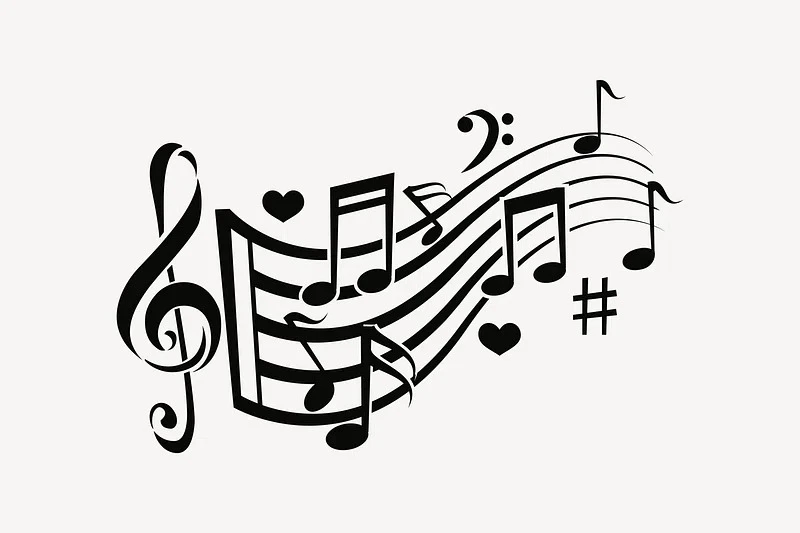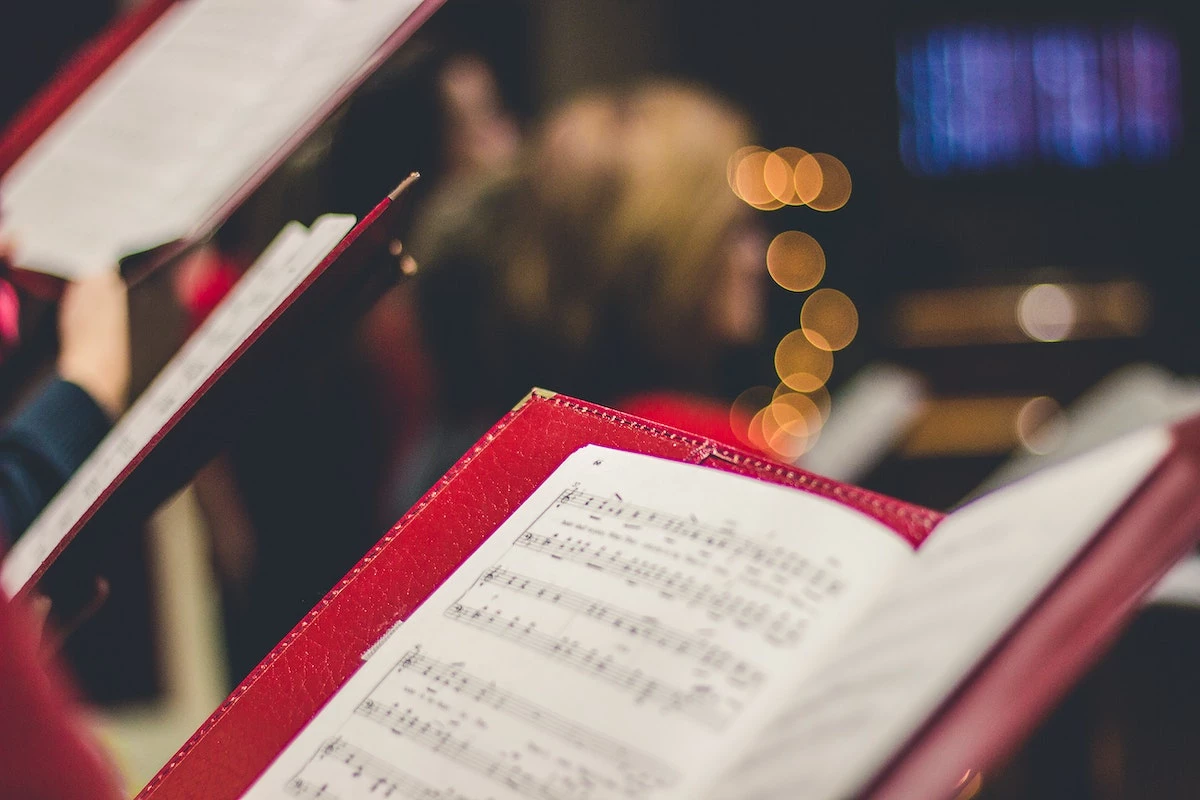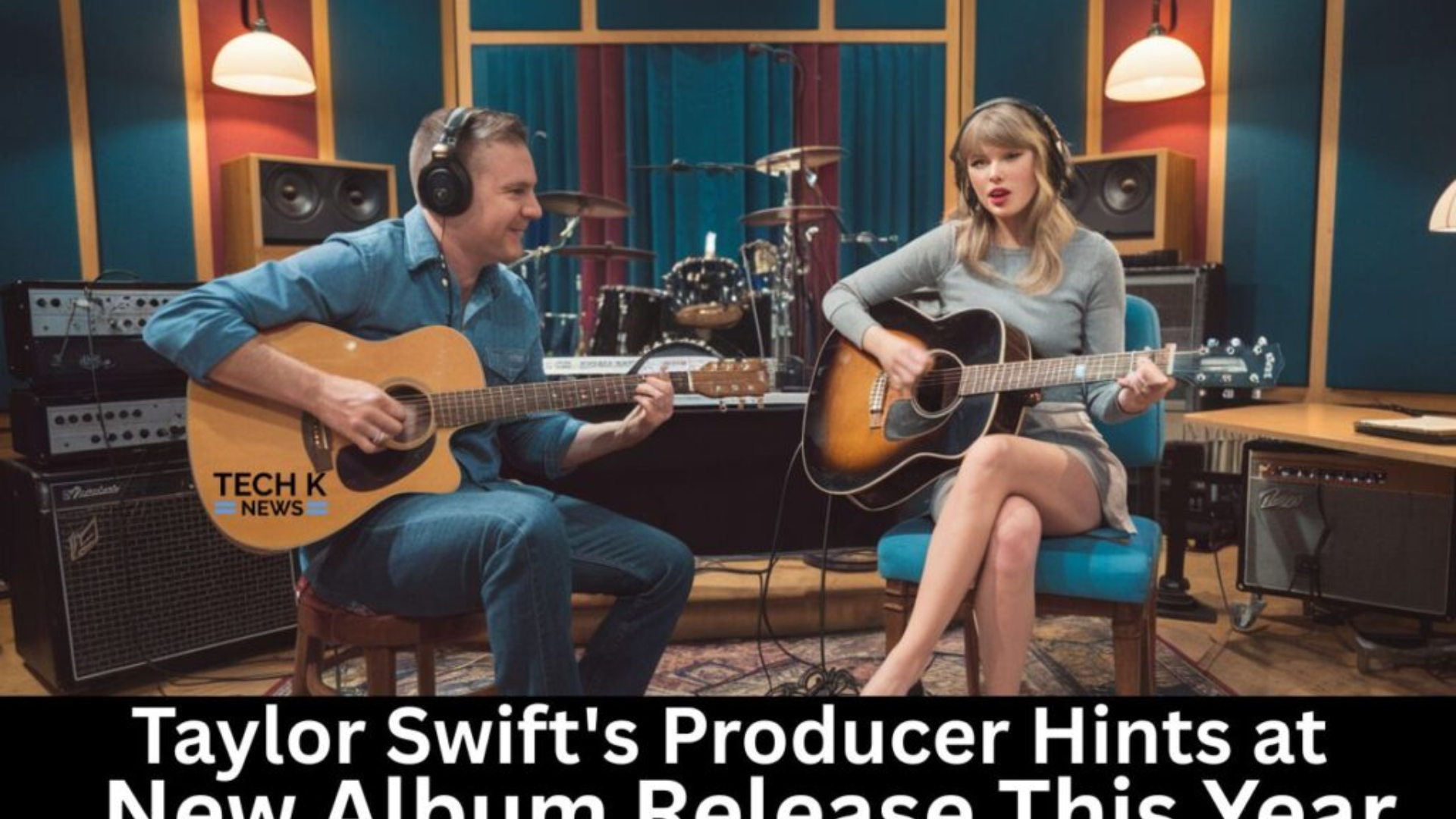ENTERTAINMENT
The Benefits of Using a Free Music Learning App for Beginners

Introduction to Music Learning Apps
In today’s digital age, music learning apps have revolutionized the way beginners approach their musical journey. Gone are the days of solely relying on traditional lessons; these innovative tools bring the art of music right to your fingertips. With a vast array of features, a free music learning app caters to diverse learning styles, making it easier than ever for novices to grasp the fundamentals of music theory, instrument play, and even songwriting.
Many of these apps offer interactive lessons such that the users actually enjoy practicing via gamification of various skills, rather than making it a chore. Instant feedback, which beginners can appreciate, works toward improvement and confidence boosting. On top of that, this flexibility to learn on-the-go means anyone can fit music into busy schedules, whether it be on commutes or even over lunch.
Most of the free music learning apps dole out a variety of resources, from video tutorials and sheet music to community forums. Democratizing music education, it doesn’t just break down geographical barriers but creates an enabling atmosphere wherein the learners can come in contact with one another to grow together. Indeed, there is little surprise, with such comprehensive offerings, that music learning apps are fast becoming an indispensable tool for aspirant musicians.

Overview of Free Music Learning Applications
Free music learning applications have taken beginner lessons to the next level in this digital era. Free music learning applications are one easily accessible entry points for any enthusiast who wants to begin with music education, overcoming geographical and financial barriers. With an extensive library, one can choose an instrument, genre, or skill level that best suits their learning process.
One of the salient features of these apps is interactivity: many use gamification techniques, which ensure practice can be transformed into a fun and engaging experience, with immediate feedback on one’s performance instantly available. This inherently serves the dual purpose of not only keeping the learners motivated but also accelerating their progress. Besides this, functions like video tutorials and step-by-step lessons give choices to the learners about their preference for learning.
What is more, the community feature of some free music learning apps creates a bonding effect among its members. Most of the platforms offer collaboration options, which give an ability to share progress, ask for advice, or even join some challenge. In other words, such applications provide not only beneficial resources but also supportive communities that help raise future musicians just from the very beginning of their musical journey.
Features of Free Music Learning Apps
Free music learning applications are fully equipped with tools that make them invaluable to beginners who wish to start their musical journey. Among the most striking features is the inclusion of interactive lessons based on various learning styles. Often, such lessons are gamified, making practice quite fun and enjoyable. Most offer rewards, progress tracking, and even a little competition with friends, keeping the motivation quite high.
Another cool feature of such apps is the big song library that learners may use. Many apps will include huge genres, allowing users to play popular tracks they love along with the apps, making learning more fun and committed. Moreover, built-in tutorials or video demonstrations visually guide the user through making sure they learn correct techniques.
Many free apps also employ the use of AI to give instant feedback on performance for immediate identification of areas of improvement by the beginner. Community forums and social features allow users to connect with other learners, share tips, and even collaborate on projects. Each of these factors, put together, creates a thorough and supportive environment in which free music learning apps foster the growth of skills and a lifelong love for music.
Benefits to Beginners
To novices in the world of music, free-to-use music learning apps become an unparalleled gateway to creativity and skill-building. First and foremost, obvious advantages exist in the accessibility afforded. Via such apps, learners can delve deep into their lessons any time and from anywhere, out of reach of the binding nature of conventional classroom settings. Such an option for flexibility will let them learn at their comfort level, whereby there is no need to hurry over things but to dedicate enough time such that every concept is understood thoroughly.
Further, many applications include game-like features, turning practice into a fun process. Therefore, scales and chord progressions, interactive games may help the beginner not to feel the burden of learning. Another strong point is diversity in resource availability. From video tutorials to playing interactive sheet music and rhythm exercises, beginners can get familiar with various faces of music learning without the need to spend much money on different materials.
Most, if not all of them, incorporate discussion forums and other social features that permit novices to interact with other people at the same level by posting their progress and seeking advice. This can be really encouraging and therefore turns the process of music learning from a mere acquisition of a certain skill into a way of socializing and sharing enthusiasm. What free music learning applications do is democratize music education and make it accessible and enjoyable for everyone.
Convenience and Accessibility
In today’s fast-moving world, ease and accessibility to almost everything are some of the most looked-forward-to features, especially for the novice musician. Free music learning applications can introduce a whole new dimension in how burgeoning musicians relate to their art by breaking down those intimidation factors that kept so many from attempting to learn an instrument. Free learning apps for music are downloadable for smartphones and tablets. They provide users with an array of materials that can easily be accessed anywhere and at any time, whether at home, during commutes, or even during lunchtime.
More so, the user-friendly interfaces of these applications allow for a great deal of skill variety: from the very beginner levels-including tutorials, practice exercises, and interactive lessons. Besides features like personalized learning paths and real-time feedback, users can learn at their own pace, eliminating any pressure associated with traditional music classes.
Also, most of these applications will grant a number of diverse genres a learner may be exposed to in order to find his or her niche. The level of convenience and flexibility provided enables not only the development of a love for music but also allows literally any person to begin their musical education at any convenient moment and at an affordable price-the dream of playing an instrument finally becomes available to everyone.
Engagement and Motivation

These days, engagement and motivation have become an integral part of a beginner’s journey in learning music. Free music learning apps will employ these elements to great effect by making the learning experience more interactive-something that might have lacked in traditional methods. Users can earn points, unlock achievements, and even compete with their friends using gamified learning modules, which turn practice into fun and a rewarding game. It is this feeling of achievement that makes learners come back for more and builds up a great winning streak of competitions which may lead to results.
Some even include personalized learning curves that best fit the individual’s skill level and interests, making sure each lesson is relevant and can be accomplished easily. Instant feedback on performance lets users see immediately their progress, which is really motivating. Being able to learn at your own pace, practicing when and where you want, also empowers the beginner, making your musical journey more enjoyable and less daunting.
These social features-communities and forums, collaborative challenges-increase the motivation even more by connecting them with like-minded people. It is in this supportive environment that one shares his or her struggles and successes, feeding his or her passion for music even more. Essentially, free music learning applications turn what is usually an overwhelming task of learning an instrument into a very engaging and inspirational adventure.
Personalized Learning Experience
Rarely does the one-size-fits-all approach pay off in music education. That is where free music learning apps come in, offering personalized learning. Contrary to traditional methods, these apps make use of algorithms that evaluate your progress and make changes as necessary. If you are a complete beginner, you can easily start with the basics and work your way up when your grasp of the concepts improves, never finding yourself too challenged or bored.
Many of those apps also include interactive tools, like quizzes, games, and real-time feedback, that allow active engagement with the material. This dynamic approach amplifies enjoyment and strengthens retention. For instance, if a beginning player struggles with a certain chord progression, an app could provide specific exercises to work their way up before proceeding.
Additionally, users usually have their favorite genres and instruments selected to relate better to the whole learning process and make it more motivating. Free music learning apps let learners set personal goals and track their progress themselves, and this ownership of achievement in the journey of mastering music makes the journey fulfilling instead of overwhelming.
Community and Support
Another standout benefit of using a free music learning application is often the colorful community and support system accompanying many platforms. For a learner who is new in the world of music, it may be bewildering. However, these apps create a friendly environment that allows learners to intermix with fellow enthusiasts. Most of them have forums, chat rooms, or social media groups through which users can share experiences, ask questions, and encourage one another.
This naturally leads to the creation of a community, probably the most powerful reason for collaboration: learning from others. For example, questions like how to master a difficult piece or seeking tips on how to practice effectively. Furthermore, with many apps, professional musicians and teachers provide access to adding great value to the learning process.
Moreover, being part of a community challenge or online event might make learners get serious about their musical path. By sharing progress and achievements with others, confidence is naturally fostered-and most importantly, a degree of accountability ensues. The communal aspect in these free music learning applications makes this usually solo practice a shared adventure and can make the path of learning music a whole lot less intimidating.
Choosing the Right App: Tips
- User Interface: Search for an application whose design is clean and intuitive. The cluttered look may overwhelm you, especially if you are starting from scratch.
- Variety of Content: Go for an application that can offer you so many lessons in a wide variety of genres and instruments. The variety will keep you engaged, and you shall be in a position to find out your musical preference.
- Progress tracking: Try to find an application that will allow you to track progress through quizzes, even performance metrics. It may be a thing to motivate for further improvement.
- Community Support: Select applications that contain a community or forum within them; the sense of learning together can offer support, tips, and motivation.
- Customization: The app should also provide customization possibilities to reflect your personal learning process in the form of customized lesson plans and practice schedules.
- Quality of tuition: Try to determine the background of the instructors who come in each lesson of the application. Experienced, charismatic teachers can really make much difference in your learning process.
Conclusion and Future of Music Learning Apps
One cannot make light of the impact that this would have on aspiring musicians in the years to come. Making music education free and accessible, these apps democratize music education, opening the gates for any individual with a smartphone or tablet to start their musical journey sans the financial burden associated with getting traditional lessons. Not only do these platforms recognize skill levels ranging from basic to advanced, but they also adapt to individual learning styles, thus offering personalized experiences that are perhaps not entirely possible in traditional classrooms.
With the rise in technological advancement, we will see more improvement in these apps in the near future. Some innovations which may be included are augmented reality and artificial intelligence, which will make learning far more immersive-for instance, visualizing progress made and immediate feedback on present performance. Other social features involve connecting with co-learners and mentors, hence building a community of learners that works collaboratively and is very engaging.
With instant gratification in the air, the gamification and interactivity of music learning apps are about to reach their prime. Innovating further, these tools will eventually shape not only how beginners approach music but also call upon a whole new generation of musicians-to-be, expressing themselves creatively and confidently. The future of music learning looks great, and it’s just a click away.
ENTERTAINMENT
XL NYT Crossword: A Complete Guide to Mastering the Challenge

Crossword puzzles have long been a favorite pastime for puzzle enthusiasts. Among the various options available, the XL NYT Crossword stands as one of the most challenging and rewarding puzzles one can attempt. Known for its complexity and demanding nature, the XL NYT Crossword offers a unique experience compared to its traditional counterparts.
The New York Times (NYT) crossword puzzles have set a high standard in the world of puzzles, and the XL version takes that standard even further. The XL NYT Crossword is designed to push even seasoned crossword solvers to their limits, offering an exciting and intellectual challenge for those who are ready to take it on.
In this article, we will explore the features, challenges, strategies, and tips for mastering the XL NYT Crossword. Whether you are an experienced solver or new to the world of crosswords, this guide will help you approach this puzzle with the right mindset and tools to succeed.
What Makes the XL NYT Crossword Different?
The XL NYT Crossword differs significantly from the standard daily NYT crossword puzzle. While the regular crossword may feature a 15×15 grid, the XL version includes a much larger 21×21 grid. This increased size means more clues, more answers, and, of course, more challenges for solvers. With its larger format, the XL NYT Crossword covers a wide range of topics, including pop culture, history, literature, science, and everything in between.
One of the most distinctive features of the XL NYT Crossword is its difficulty level. These puzzles are known for being particularly tough, often requiring advanced knowledge across various subjects, as well as a deep understanding of wordplay and cryptic clues. Solvers must be prepared to tackle puzzles that are more intricate and nuanced than typical daily crosswords.
For dedicated crossword fans, this level of difficulty is what makes the XL NYT Crossword so appealing. It’s an opportunity to challenge yourself, exercise your brain, and feel the satisfaction of solving a puzzle that demands more than just basic knowledge.
Why Choose the XL NYT Crossword?
If you are an avid crossword solver, you might be wondering why the XL NYT Crossword should be your next challenge. Here are several reasons why many choose to dive into the XL version:
Greater Complexity and Challenge
The XL crossword is for those who crave a more difficult and rewarding experience. With a 21×21 grid, the puzzle contains more clues, providing a much more detailed and complex experience. For those looking to challenge their problem-solving abilities, the XL NYT Crossword offers a level of difficulty that is hard to match in any other puzzle format.
Increased Variety in Clues and Themes
The XL NYT Crossword’s often features a diverse range of clues that cover a wide variety of topics. Whether you are passionate about history, literature, or sports, the XL version ensures that there is something for everyone. Additionally, the puzzles may include creative and cryptic wordplay, further enhancing the experience and making it more dynamic.
A Sense of Achievement
Solving the XL NYT Crossword’s provides a sense of accomplishment that you won’t easily find elsewhere. The larger grid and more challenging clues make completing the puzzle a major achievement. For many crossword enthusiasts, there is immense satisfaction in tackling a puzzle that is considered one of the hardest in the world.
A Great Way to Exercise Your Brain
Crossword puzzles are an excellent way to improve cognitive function and memory. The XL NYT Crossword’s, in particular, challenges your mental flexibility and sharpness. The variety of subjects, along with the creative nature of the clues, exercises your brain and helps keep it engaged.
How to Tackle the XL NYT Crossword: Tips and Strategies
Successfully completing an XL NYT Crossword’s requires more than just knowledge of trivia and vocabulary. It also demands a well-planned strategy, patience, and a solid approach to solving clues. Here are some tips and strategies to help you master the XL NYT Crossword:
Start with the Easy Clues
Like any crossword puzzle, the XL NYT Crossword’s can be tackled in a systematic way. Begin by identifying the easier clues. These are typically straightforward definitions or clues that you are confident in solving. Filling in these answers first will help you get a foothold in the puzzle and may give you hints for the more difficult clues that remain.
Use the Crosses to Your Advantage
Crossword puzzles rely heavily on intersecting answers. When you get stuck on one clue, try using the crosses—answers that intersect with the one you’re struggling with—to help you solve the puzzle. A single correct letter in a cross can provide insight into the rest of the answer, which might be otherwise difficult to decipher.
Don’t Be Afraid to Guess
The XL NYT Crossword’s is tough, and sometimes it’s necessary to take a leap of faith. You can always change the answer if it turns out to be incorrect, but taking a guess might help you move forward and uncover other clues.
Think Outside the Box with Wordplay
Many XL NYT Crossword’s clues use wordplay and puns. Be sure to think creatively when approaching clues that don’t seem to fit traditional definitions. Cryptic clues may be hiding a playful or indirect meaning, so keep your mind open to alternative interpretations. Pay close attention to words like “sounds like,” “perhaps,” and “maybe” to help guide your thinking.
Keep a Dictionary and Thesaurus Handy
Even the most experienced crossword solvers occasionally need a little help. Keeping a dictionary or thesaurus nearby can be invaluable for confirming spellings, exploring synonyms, or finding that elusive word you just can’t remember. While solving, you can quickly look up words or definitions to keep the momentum going.
Take Breaks When Needed
Stepping away from the puzzle for a while can give your mind the chance to reset and may help you approach the clues with a fresh perspective. The XL NYT Crossword’s can be mentally demanding, so it’s important to pace yourself.
What You Need to Know About XL NYT Crossword Themes
One of the most exciting aspects of the XL NYT Crossword’s is the potential for creative and engaging themes. While not every XL puzzle will have a theme, many of them incorporate clever and unique themes that tie the entire grid together. The theme could involve a particular wordplay pattern, a common topic across multiple clues, or a fun play on pop culture references.
Being able to recognize the theme early in the puzzle can help you solve certain sections faster. If you’re unsure of where to start, look for clues that might hint at the theme. Sometimes, the theme can be a hidden clue in itself, with answers related to that theme scattered throughout the grid.
The Rewards of Completing the XL NYT Crossword
There’s no question that completing the XL NYT Crossword’s is a considerable accomplishment. Whether you’re a casual solver or a crossword aficionado, conquering this larger, more complex puzzle offers a tremendous sense of satisfaction. The mental stimulation and joy of cracking tough clues make the XL NYT Crossword’s an enriching experience that’s worth the effort.
By committing to mastering the XL NYT Crossword’s, you engage in an enjoyable exercise that sharpens your cognitive abilities, enhances your vocabulary, and cultivates patience. The sense of achievement from completing the puzzle is a reward that many solvers eagerly pursue.
Conclusion
The XL NYT Crossword’s is an exceptional puzzle that challenges even the most experienced crossword enthusiasts. With its larger grid, more difficult clues, and intricate wordplay, it provides a unique and rewarding experience for those willing to put in the effort. By using the strategies outlined in this article and approaching the puzzle with patience, you can confidently tackle the XL NYT Crossword’s and reap the intellectual rewards that come with completing it.
ALSO READ:Harnessing the Power of Laravel Pipelines
FAQs
How difficult is the XL NYT Crossword compared to the regular NYT crossword?
The XL NYT Crossword’s is significantly more difficult than the regular NYT crossword due to its larger grid, increased number of clues, and more complex wordplay.
How long does it typically take to complete the XL NYT Crossword?
The time required to complete the XL NYT Crossword’s varies depending on the solver’s experience. For beginners, it may take several hours, while experienced solvers may complete it in about 1-2 hours.
Can I use outside resources while solving the XL NYT Crossword?
While some solvers prefer to work on the puzzle without outside help, it’s perfectly acceptable to use a dictionary, thesaurus, or online solver tools when you get stuck.
Does the XL NYT Crossword have a specific theme?
Many XL NYT Crossword’s puzzles feature a theme that ties the answers together. However, not every puzzle includes a theme. When a theme is present, it can provide valuable hints for solving the puzzle.
Is there a way to get better at solving the XL NYT Crossword?
The best way to improve your skills is through practice. The more puzzles you solve, the more you’ll get used to the clue structures and wordplay styles used in the XL NYT Crossword’s.
ENTERTAINMENT
taylor swift’s producer hints at new album release this year

Taylor Swift has long been a household name in the music industry, renowned for her storytelling abilities and her mastery of songwriting. As one of the most influential and commercially successful artists of her generation, each of her album releases is an event that captivates fans and critics alike. Now, with a new hint from her producer, it appears that Swift may be gearing up for yet another highly anticipated album in 2025. This has set the internet abuzz with excitement, as fans speculate about the sound, themes, and collaborations that might be featured on the upcoming record.taylor swift’s producer hints at new album release this year
Over the years, Taylor has continually evolved her musical style, moving from country to pop and even indie folk influences. Her willingness to reinvent herself with every album has kept fans on their toes, eager for what comes next. With her recent re-recording project, where she regained control of her music, the question of her next move is more exciting than ever.
This article will explore the latest hints from Taylor Swift’s producer, delve into what we can expect from the potential new album, and look back at Swift’s journey and growth as an artist.
The Latest Hint From Taylor Swift’s Producer
Recently, Taylor Swift’s producer, who has worked closely with her throughout her career, teased the possibility of a new album dropping this year. While not revealing too much, the producer’s cryptic comments have led to a flood of speculation in the music industry and among Swift’s dedicated fanbase.
Many have speculated that Swift might be returning to the studio with a new vision after the success of her previous albums, like Folklore and Evermore. These albums showcased a more introspective and indie folk side of Swift, which received widespread critical acclaim. As Swift’s producer hinted at a new release, questions have emerged regarding whether her new project will continue this softer, more nuanced sound, or if it will shift to something entirely different.
Swift’s recent re-recording project, where she has released new versions of her earlier albums like Fearless (Taylor’s Version) and Red (Taylor’s Version), has fueled further intrigue. These re-recordings have allowed her to reclaim her artistic voice and reassert control over her music after disputes with her former label. Given the critical success and commercial appeal of these releases, fans are eagerly awaiting her next chapter, wondering if this new album will continue on the path of personal growth or take on a fresh direction.
What to Expect From Taylor Swift’s New Album
While details remain sparse, there are a few educated guesses we can make based on past trends and statements made by Swift and her team. Here are some key things to expect from Taylor Swift’s next album, based on her evolving artistic style and her current musical trajectory.
1. A New Sound
Taylor Swift has always been an artist willing to experiment with her sound, from the country roots of Taylor Swift to the pop-centric 1989, the indie folk touches of Folklore and Evermore, and even the synth-driven vibes of Reputation. With each album, she continues to evolve, and her fans have come to expect nothing less.
After the introspective, subdued nature of her recent works, it’s possible that Swift might return to her more upbeat, pop-oriented sound. Given the hints of a new release, it’s likely she’s experimenting with something fresh—whether it’s a return to the more electronic elements of Reputation, the lush pop melodies of 1989, or a blend of both. Whatever the direction, Swift is likely to continue pushing boundaries, combining her signature lyrical depth with new, innovative sounds.
2. Personal Themes and Storytelling
Taylor Swift’s ability to craft emotionally resonant narratives is what has endeared her to millions of fans around the world. Whether she’s writing about love, heartbreak, or self-discovery, Swift’s lyrics always carry a personal touch. Fans can expect her next album to delve deeply into her personal experiences and reflections.
In the past, Swift’s albums have addressed various aspects of her life—from the breakup anthems in Red to the themes of healing and redemption in Folklore and Evermore. Given the trajectory of her life, it’s likely that her new album will reflect her journey over the past few years, with mature reflections on love, relationships, and personal growth.
3. Possible Collaborations
Taylor Swift is no stranger to collaborations, having worked with artists such as Ed Sheeran, Bon Iver, and The National in the past. Fans are eagerly speculating about possible collaborations on the upcoming album. Given Swift’s ability to seamlessly blend her voice with others, collaborations could add an exciting layer to the new project.
There is also the possibility that Swift could surprise fans with unexpected features, exploring new genres or working with rising stars in the industry. Considering her success with collaborations on previous records, it wouldn’t be surprising to see more guest appearances or co-writing partnerships in the mix.
4. Potential for a Concept Album
Given Swift’s recent exploration of intricate storytelling, there’s a chance her next album could be a concept album—something similar to Folklore and Evermore, where the songs tell a cohesive story throughout the entire record. Swift has proven she can handle complex narratives, so fans may be treated to a more cohesive, thematic album that ties the tracks together in an overarching narrative.
5. Surprise Releases
Swift has already surprised her fans multiple times with surprise album drops, most notably with Folklore in 2020. She shocked the world by releasing an album with no prior promotion, and it became one of the most critically and commercially successful records of the year. Given the success of this strategy, there’s a possibility that Swift might use a similar surprise release tactic for her next project.
This approach would certainly generate buzz and excitement, keeping her fans on their toes. A surprise release would also reflect her ability to control her narrative and build anticipation without relying on traditional promotional cycles.
Taylor Swift’s Evolution as an Artist
To understand what might be coming in Taylor Swift’s next album, it’s essential to consider her evolution as an artist. Over the years, Taylor Swift has reinvented herself multiple times, shedding her former image as a country-pop princess and embracing new sounds, themes, and personas. Here’s a brief look at her musical evolution.
Early Country-Pop Days
Taylor’s journey began in the mid-2000s with her debut self-titled album, which was rooted in country music with a pop influence. Hits like “Tim McGraw” and “Teardrops on My Guitar” introduced Taylor as a talented young songwriter with a knack for relatable storytelling. Her early music focused on themes of youthful romance, small-town life, and self-discovery.
Transition to Pop Stardom
By the time Red was released in 2012, Taylor had fully embraced the pop genre, with songs like “We Are Never Ever Getting Back Together” and “I Knew You Were Trouble” taking the charts by storm. This marked a significant shift in her sound and image, transitioning her from a country singer-songwriter to one of the biggest pop stars in the world.
Reinventing the Sound with 1989
In 2014, Taylor released 1989, an album that fully embraced the 1980s pop sound with infectious tracks like “Shake It Off” and “Blank Space.” This was another turning point in her career, as she continued to shed her country roots and cement her status as a pop music icon.
The Indie Folk Era
In 2020, Swift shocked fans by releasing Folklore, a more stripped-down, indie-folk-inspired album that showcased a more introspective side of the singer. Collaborating with Aaron Dessner of The National and Bon Iver’s Justin Vernon, Swift’s music moved in a more melancholic, reflective direction. This album was followed by Evermore, which continued the theme of wistful storytelling and emotional depth.
Conclusion
Taylor Swift’s producer hinting at a new album release this year has set fans into a frenzy of excitement and speculation. After a period of reinvention with Folklore and Evermore, it’s unclear what direction Swift will take next. Whether it’s a return to her pop roots, an experimental sound, or another surprise shift, one thing is certain: Swift’s ability to evolve as an artist means that her next album will be worth the wait.
As the anticipation builds, fans can only guess what’s in store. However, given Swift’s track record of delivering memorable music, there’s little doubt that her next album will be another monumental success.
ALSO READ:Why Are Pipe Organs So Inspiring? Majesty of a Musical Marvel
FAQs
Is Taylor Swift releasing a new album this year?
Yes, Taylor Swift’s producer has hinted at the possibility of a new album being released this year, though specific details remain scarce.
What can we expect from Taylor Swift’s new album?
Fans can expect a fresh sound, possible collaborations, and personal themes in the album. Swift is known for constantly evolving, so it’s likely to be a departure from her previous works.
Will Taylor Swift continue her indie-folk style in the new album?
It’s possible, but given Swift’s history of reinvention, the new album could feature a completely different sound, whether it’s pop, alternative, or something new.
Has Taylor Swift ever released a surprise album?
Yes, Taylor Swift surprised fans with the release of Folklore in 2020, dropping it without prior announcement or promotion.
When can we expect more details about Taylor Swift’s new album?
As of now, official details have not been released, but fans are eagerly awaiting more information as Swift’s producer has hinted at an album dropping later this year.
ENTERTAINMENT
Seasonal Buying Cycles and Inventory Planning for Bulk Christmas Gifts

Effective inventory planning is essential for wholesalers and retailers with bulk Christmas gifts. This article explores managing the Christmas gift-buying timeline, making early-bird wholesale purchases, understanding order lead times, and implementing effective storage solutions for seasonal stock.
Understanding the Christmas Gift Buying Timeline
The Christmas season presents a significant opportunity for wholesalers and retailers but also introduces challenges. Proper timing ensures the right products are available immediately without overwhelming your inventory with unsold stock.
Early-Bird Wholesale Purchases
Successful Christmas gift sales begin well before the holiday season kicks in. Early-bird wholesale purchases ensure products are available in time for pre-holiday shopping. Retailers and wholesalers who secure their inventory ahead of time are more likely to avoid stockouts during peak demand periods.
Bulk buying should typically take place from July to September. This provides sufficient time for manufacturers to fulfill orders, allowing wholesalers to plan for storage and distribution.
Understanding Lead Times and Delivery Schedules
Lead times—the time it takes to manufacture and ship products—play a crucial role in inventory planning, especially for international orders. A clear understanding of lead times helps prevent delays and stockouts.
Domestic orders usually range from a few weeks to a month. International lead times are typically longer due to shipping and customs processes. Depending on the origin and destination, these can range from one to three months.
Avoiding Stockouts and Overstocks During Peak Season
One of the most significant challenges of holiday inventory planning is balancing the need to meet high demand with the risk of carrying excess stock.
Implementing Effective Storage Solutions
Proper seasonal stock storage is crucial to maintain product quality and accessibility during peak season.
- Warehouse Organization: Organizing the warehouse is essential, especially when you have many products. Categorize products by type, size, and demand. Place high-demand items near the front for easy access.
- Climate-Controlled Storage: Some products, such as delicate or perishable items, require special storage conditions like temperature or humidity control. Investing in climate-controlled storage ensures that products are preserved in optimal conditions.
Handling Stockouts and Overstocks
Even with careful planning, stockouts and overstocks can still occur. Here’s how to handle them effectively:
- Stockouts: If an item runs out of stock, offer alternatives or pre-order options to ensure customers will receive their desired product once it’s available again.
- Overstocks: Excess inventory can be cleared through sales, discounts, or product bundling. Consider working with online platforms or offering gift sets to move slow-moving items.
Post-Season Inventory Management
Once the holiday season ends, it’s time to manage leftover inventory. While the goal is to sell as much as possible during the season, some stock will remain, and it’s essential to manage it effectively.
Clearance sales offer a way to move unsold stock quickly. Offering discounts on leftover products can help recover costs and free up storage space for the next cycle.
Key Takeaways
Managing seasonal buying cycles and inventory planning for bulk Christmas gifts requires strategic foresight, accurate demand forecasting, and practical storage solutions. Planning ensures that your business is ready to capitalize on the holiday shopping season while maintaining operational efficiency year-round.

 Cartoon1 year ago
Cartoon1 year agoUnlocking the Potential of Nekopoi.care: A Comprehensive Guide

 Game1 year ago
Game1 year agoExploring Aopickleballthietke.com: Your Ultimate Pickleball Destination

 BUSINESS1 year ago
BUSINESS1 year agoWhat Companies Are In The Consumer Services Field

 BUSINESS11 months ago
BUSINESS11 months agoUnraveling the Mystery of 405 Howard Street San Francisco charge on Credit Card

 HOME IMPROVEMENT1 year ago
HOME IMPROVEMENT1 year agoVtrahe vs. Other Platforms: Which One Reigns Supreme?

 TECHNOLOGY12 months ago
TECHNOLOGY12 months agoThe Guide to Using Anon Vault for Secure Data Storage

 ENTERTAINMENT8 months ago
ENTERTAINMENT8 months agoUnderstanding Bunkr Album: A Comprehensive Guide

 ENTERTAINMENT1 year ago
ENTERTAINMENT1 year agoThe Epic Return: Revenge of the Iron-Blooded Sword Hound
















